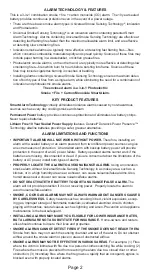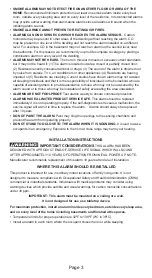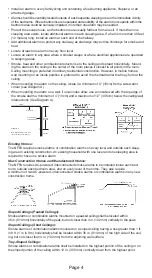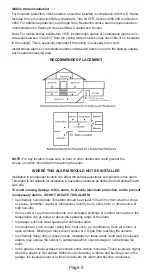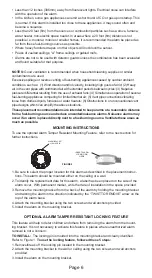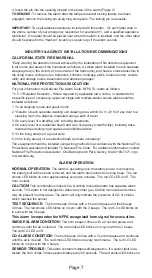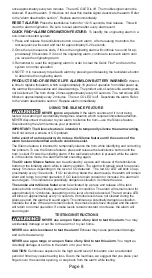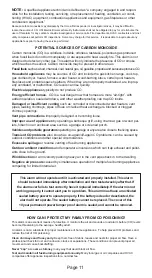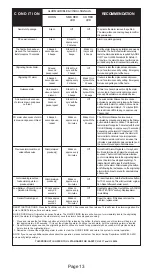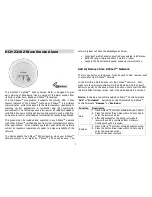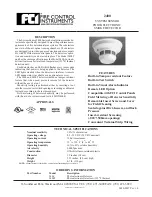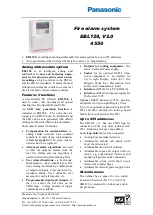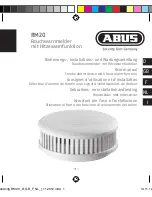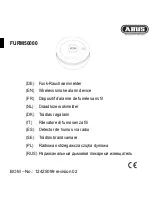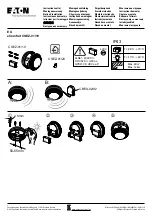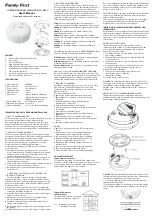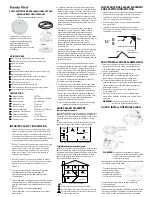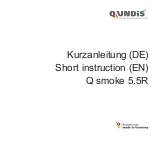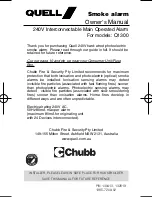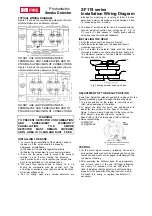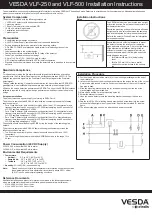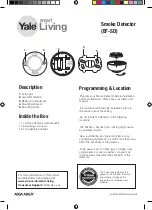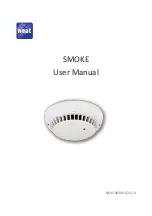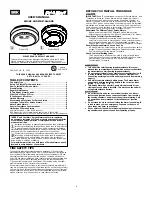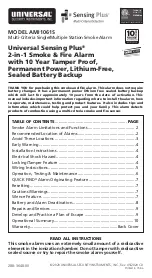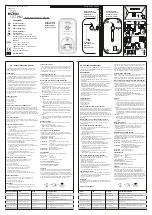
Page 11
NOTE:
A qualified appliance technician is defined as “a company engaged in and respon-
sible for the installation, testing, servicing, or replacement of heating, ventilation, air condi-
tioning (HVAC) equipment, combustion appliances and equipment, gas fireplaces or other
combustion equipment.”
Because carbon monoxide may dissipate by the time a first responder or investigator arrives, it may be difficult to
locate the source of CO . USI Electric/Universal Security Instruments shall not be obligated to pay for or reimburse the
user of this alarm for any carbon monoxide investigation or service calls . Fire departments, HVAC contractors and most
utility companies will perform CO inspections . Some may charge for this service . It is advisable to inquire about any
applicable fees prior to having the service performed
POTENTIAL SOURCES OF CARBON MONOXIDE
Carbon monoxide (CO) is a colorless, invisible, odorless, tasteless, poisonous gas produced
when fossil fuels do not burn completely, or are exposed to heat, usually fire. This alarm is not
designed to detect any other gas . This alarm will only indicate the presence of CO or smoke
which reaches the sensor . Carbon monoxide may be present in other areas .
Fossil fuels
such as wood, charcoal, coal, natural gas, oil, gasoline, propane and kerosene produce CO .
Household appliances
may be sources of CO and include the gas kitchen range, cook top,
gas clothes dryer, heater, furnace, water heater, wood-burning stove, certain pool heaters,
fireplaces and portable space heathers. When they are not properly maintained, are improp-
erly ventilated, or malfunction, CO levels can rise quickly .
Electrical appliances
typically do not produce CO .
Energy efficient homes.
CO is a real danger now that homes are more “air-tight”, with
added insulation, sealed windows, and other weatherproofing can trap CO inside.
Damaged or insufficient venting
such as; corroded or disconnected water heaters, vent
pipes, leaking chimneys, pipes or flues or cracked heat exchangers, blocked or clogged
chimney openings .
Vent pipe connections
improperly designed or becoming loose .
Improper use of appliances
by operating a barbeque grill, using charcoal, gas or wood pel-
lets, hibachi in an enclosed area such as a garage or screened porch .
Vehicles and portable generators
operating in a garage or any area too close to the living space .
Transient CO problems
also known as on-again/off-again CO problems, can be caused by
outdoor conditions and other special circumstances .
Excessive spillage
or reverse venting of fuel-burning appliances .
Outdoor ambient conditions
and temperature inversions which can trap exhaust and pollut-
ants close to the ground .
Wind direction
or wind velocity pushing heavy air in the vent pipes back in to the dwelling .
Negative air pressure
caused by simultaneous operation of multiple fuel burning appliances
competing for limited internal air .
HOW CAN I PROTECT MY FAMILY FROM CO POISONING?
This alarm is an excellent means of protection. It monitors the air and sounds a loud alarm before (CO) levels
become threatening to the average, healthy adult .
An alarm is not a substitute for proper maintenance of home appliances . To help prevent CO problems and
reduce the risk of CO poisoning:
Clean chimneys and flues yearly.
Keep them free of debris, leaves and nests for proper air flow. Have a
professional check for rust and corrosion, cracks or separations . These conditions can prevent proper air
movement and cause backdrafting .
Never “cap” or cover a chimney
in any way that would block air flow.
Test and maintain all fuel-burning equipment annually.
Many local gas or oil companies and HVAC
companies offer appliance inspections for a nominal fee .
This alarm will not operate until it is activated and properly installed. This alarm
should be tested immediately after installation and then tested weekly after that. If
the alarm ever fails to test correctly, have it replaced immediately. If the alarm is not
working properly, it cannot alert you to a problem. This alarm must have an activated
sealed battery power to operate properly. If the battery is dead or deactivated, the
alarm will not operate. The sealed battery cannot be replaced. The cover of this
10 year permanent power tamper proof alarm is sealed, and cannot be removed.
Summary of Contents for MPC322S
Page 14: ...Page 14...


